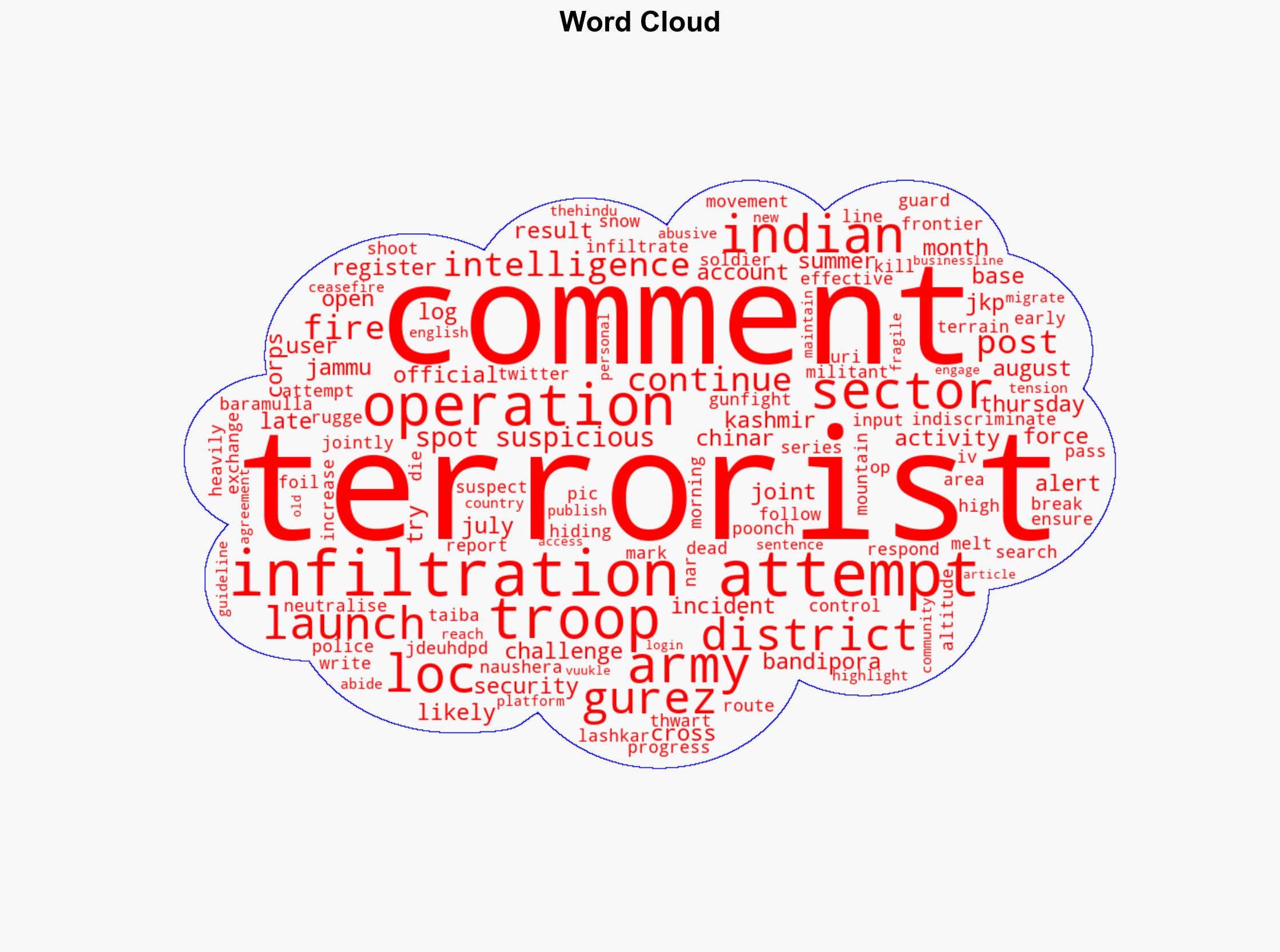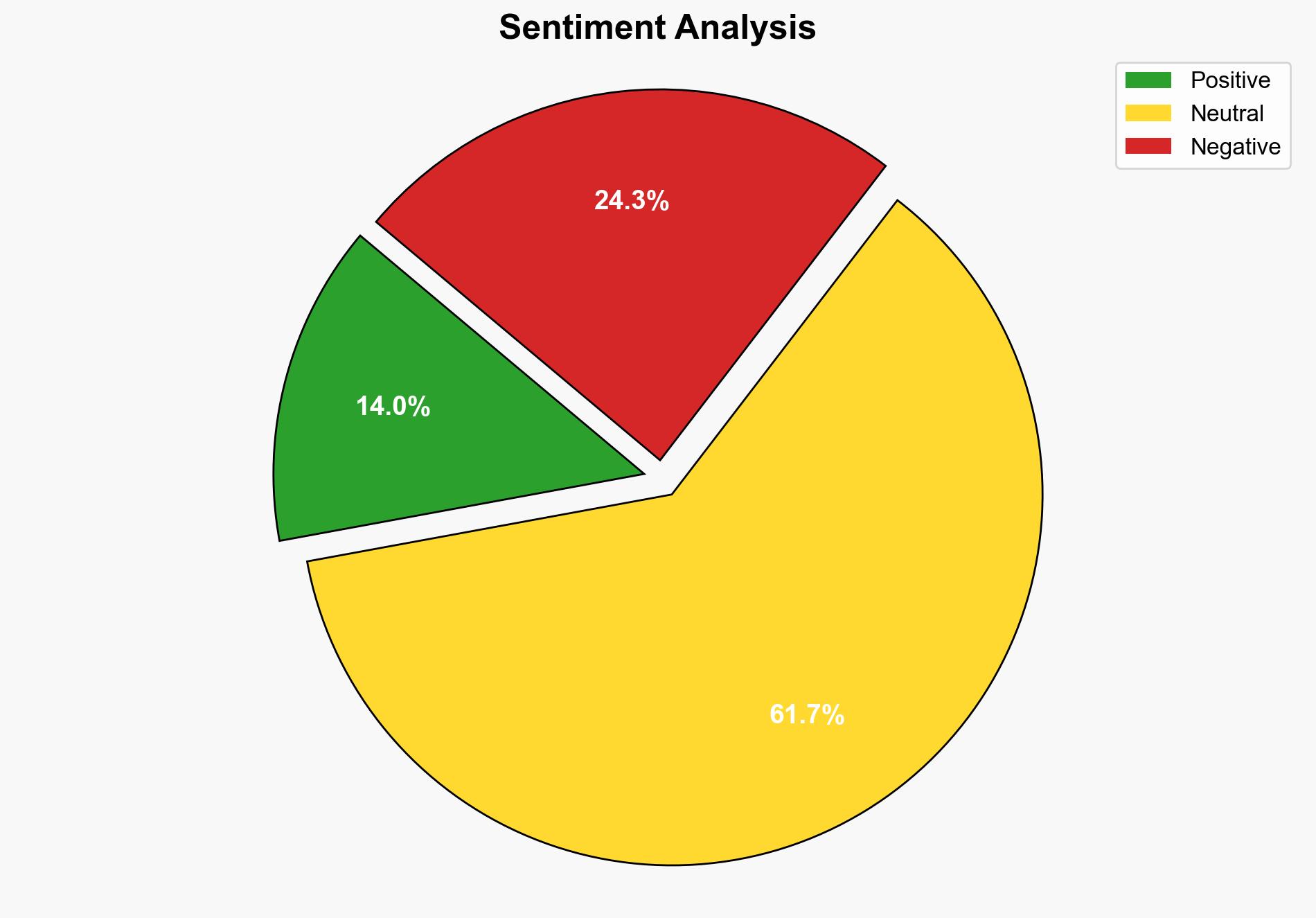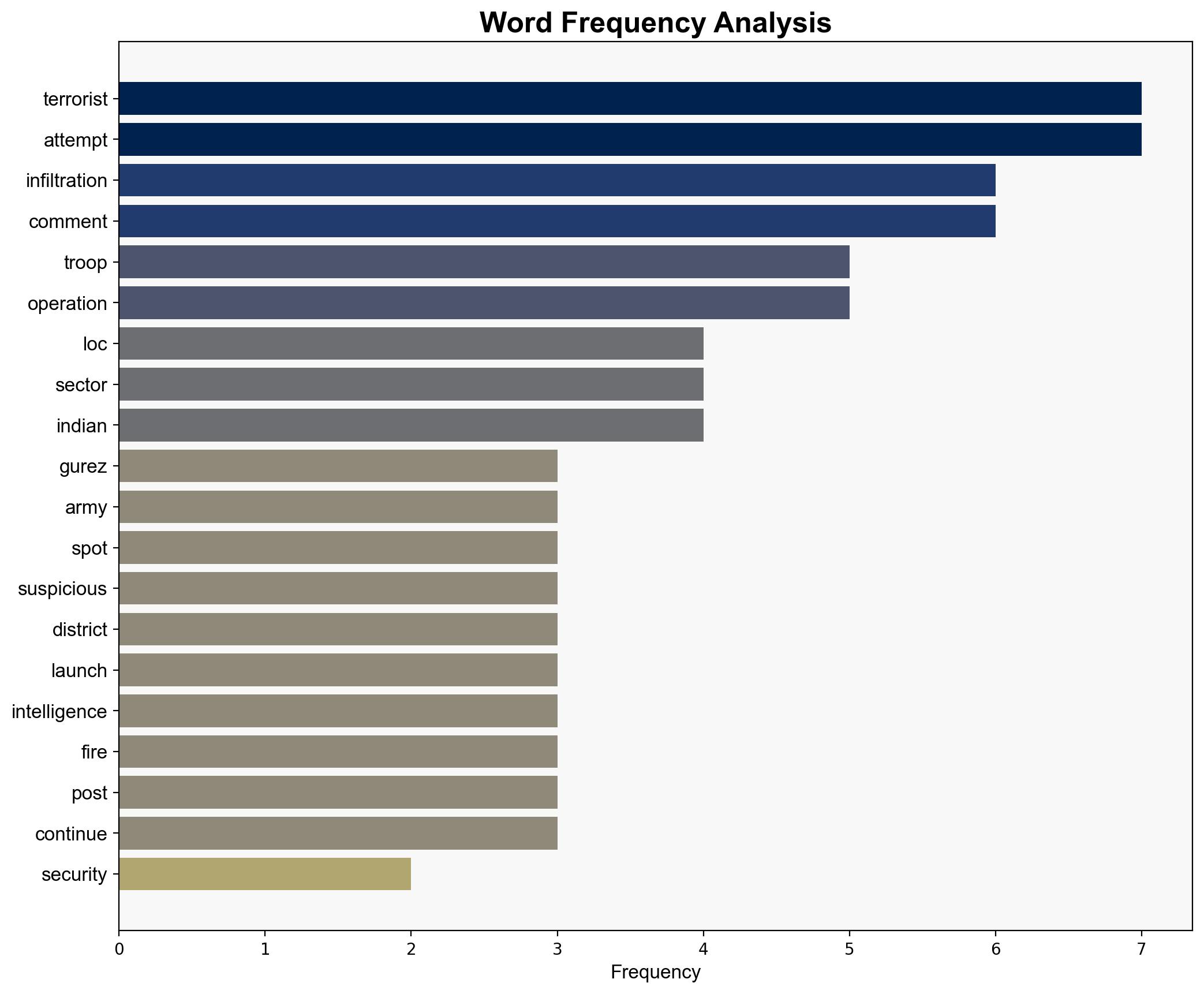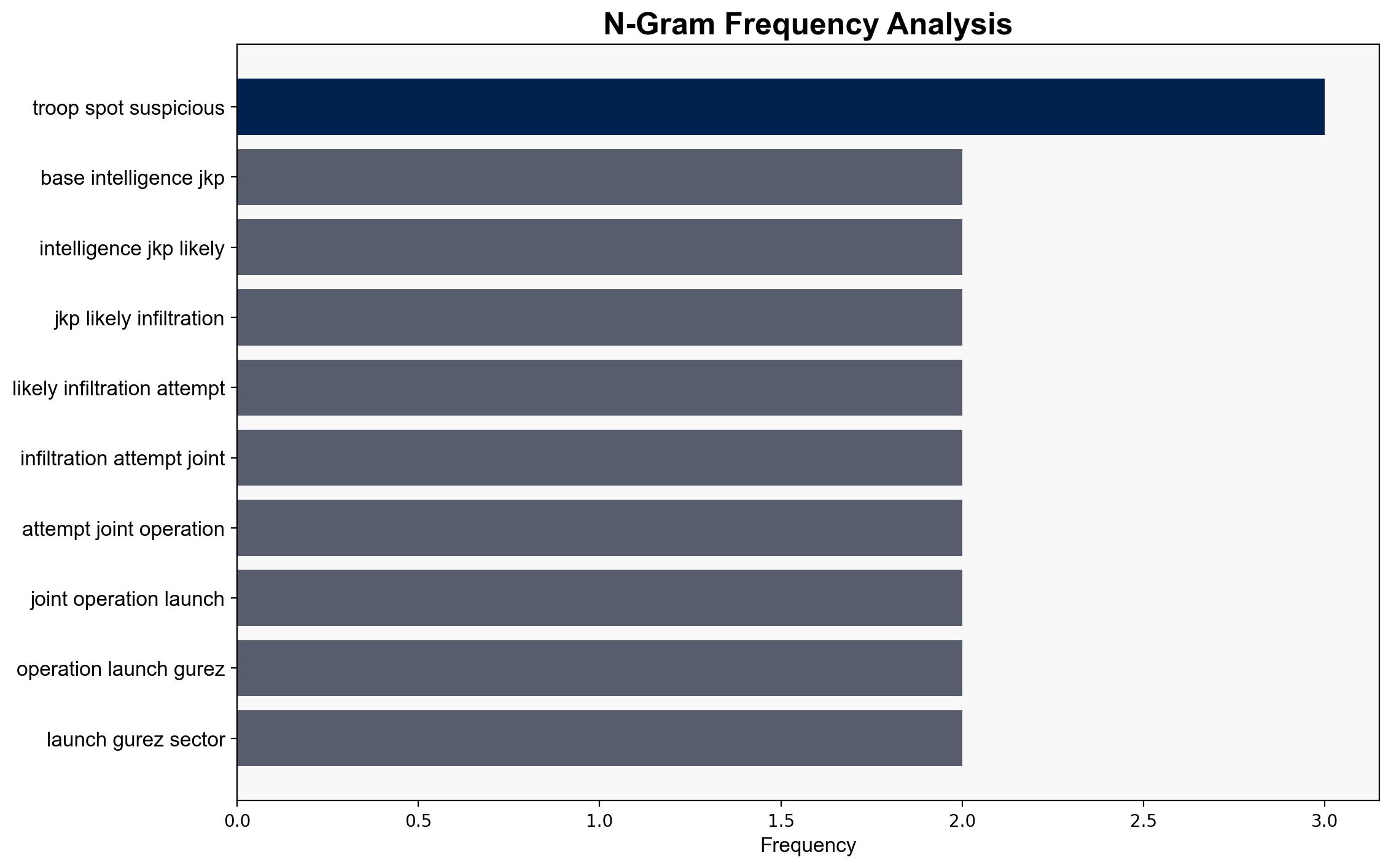Security forces foil infiltration bid at LoC kill 2 terrorists – BusinessLine
Published on: 2025-08-28
Intelligence Report: Security forces foil infiltration bid at LoC kill 2 terrorists – BusinessLine
1. BLUF (Bottom Line Up Front)
The most supported hypothesis is that the infiltration attempt was a planned operation by terrorist groups to exploit seasonal vulnerabilities along the Line of Control (LoC). Confidence level: Moderate. Recommended action includes enhancing surveillance and intelligence-sharing mechanisms to preempt future attempts.
2. Competing Hypotheses
1. **Hypothesis A**: The infiltration attempt was a coordinated effort by a terrorist group, possibly Lashkar-e-Taiba, to test the defenses and exploit seasonal vulnerabilities at the LoC.
– **Supporting Evidence**: The incident aligns with historical patterns of increased infiltration attempts during summer months when snow melts, opening high-altitude passes. Previous incidents in July and early August suggest a pattern.
2. **Hypothesis B**: The infiltration attempt was an isolated incident by a small, independent cell acting without broader organizational support.
– **Supporting Evidence**: Lack of specific attribution to a major terrorist group in the report and the absence of a significant number of infiltrators suggest a smaller, less coordinated effort.
3. Key Assumptions and Red Flags
– **Assumptions**:
– Hypothesis A assumes that the pattern of infiltration is consistent with organized group activity.
– Hypothesis B assumes that the lack of explicit group attribution indicates a smaller, independent operation.
– **Red Flags**:
– The report does not specify the identity of the terrorists, which could indicate either a lack of intelligence or intentional withholding of information.
– Repeated references to “likely infiltration attempts” suggest potential gaps in intelligence certainty.
4. Implications and Strategic Risks
– **Patterns**: Increased infiltration attempts during summer could strain military resources and heighten tensions at the LoC.
– **Cascading Threats**: Successful infiltration could lead to terrorist attacks within the region, destabilizing local security.
– **Potential Escalation**: Continued attempts could provoke military responses, risking broader conflict.
– **Geopolitical Dimension**: The incident underscores the fragile nature of the ceasefire agreement, with potential impacts on regional diplomacy.
5. Recommendations and Outlook
- Enhance surveillance and reconnaissance capabilities along the LoC, particularly during high-risk periods.
- Strengthen intelligence-sharing frameworks with regional allies to preempt infiltration attempts.
- Scenario Projections:
– **Best Case**: Improved intelligence and proactive measures prevent further infiltration attempts, maintaining regional stability.
– **Worst Case**: Successful infiltration leads to significant terrorist activities, escalating military tensions.
– **Most Likely**: Continued infiltration attempts with intermittent success, requiring sustained military vigilance.
6. Key Individuals and Entities
– No specific individuals are mentioned in the report. Entities include the Indian Army, Jammu and Kashmir Police, and potentially Lashkar-e-Taiba.
7. Thematic Tags
national security threats, counter-terrorism, regional focus, border security





